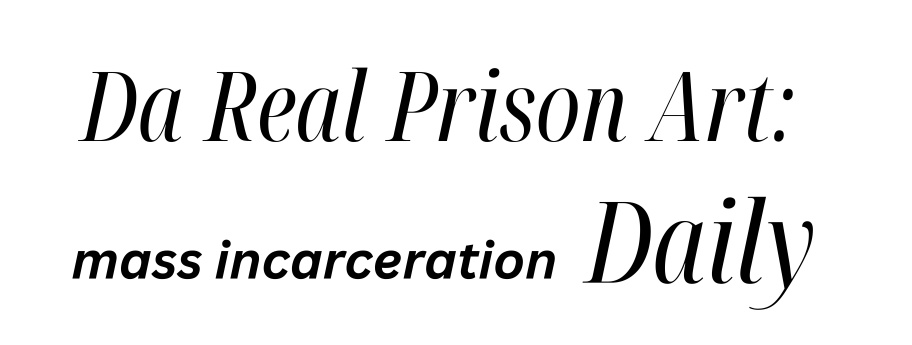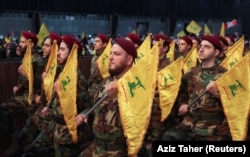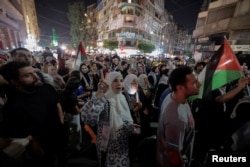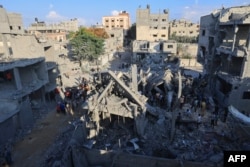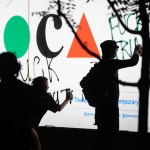As fighting intensifies between Palestinian militant group Hamas and Israel, Iran has been increasingly vocal about the prospect of additional firepower entering the fray to score a victory for what Tehran calls the “axis of resistance” against Israel.
The axis, refined by the Islamic republic over the last four decades, is a loose-knit network of proxies, Tehran-backed militant groups, and allied state actors who play an important role in Iran’s strategy to oppose the West, Arab foes, and, primarily, Israel.
Active in the Gaza Strip, Lebanon, Iraq, Syria, and elsewhere, the network allows Iran to create chaos in enemy territory, while allowing it to maintain a position of plausible deniability.
In the case of the latest conflict involving Iran-backed Hamas in Gaza, the stronger the Israeli response and the greater the blowback by Israel’s Shi’ite and Sunni enemies in the region, the better it is for Iran, experts say.
It is a strategy that dates back to before the 1979 Islamic Revolution, according to experts, but was honed and rebranded as the axis of resistance by the Quds Force, the elite overseas arm of Iran’s Islamic Revolutionary Guards Corps (IRGC).
“Although a new term, ‘axis of resistance’ describes an old phenomenon: any individual or group willing to fight Iran’s wars in return for funding, arms, military training, and intelligence support,” Ali Alfoneh, senior fellow at the Arab Gulf States Institute in Washington, told RFE/RL in written comments.
But while Iran openly positions itself as the leading voice of the network as it calls for global resistance against Israel and the West, “the Quds Force avoids micromanagement and provides the proxies with some maneuvering room,” Alfoneh said.
This relative autonomy, which at times has even seen proxies and partners work against Tehran’s regional interests, makes it difficult to pin blame directly on Iran.
“If there is any kind of kinetic retaliation, your proxy, your partner absorbs the retaliation, and if your adversary wants to widen the scope, they have a hard time politically connecting the dots to do that,” Behnam Ben Taleblu, senior fellow at the Washington-based Foundation for Defense of Democracies think tank, told RFE/RL.
‘Successful Proxy Strategy’
The October 7 assault on Israel carried out by the Sunni militant group Hamas was a case in point, with Iran lauding the attack that killed more than 1,400 Israelis and triggered retaliatory Israeli strikes on Gaza that have so far killed more than 3,700 people and unleashed a devastating humanitarian crisis.
But despite Iran’s longstanding support of Hamas — which Alfoneh said is historically closer to Sunni Arab states and is for the most part funded by Qatar — Israel and the West have not been able to directly tie the assault to Iran.
“When assessing the connective tissue between Iran and Hamas, we can’t forget that the desire for Iran to disguise its own hand plays into the Islamic republic’s own successful proxy strategy,” Taleblu said. “The fact that some folks are having a hard time finding an immediate go order, or a very clear green light, is the success of the proxy strategy.”
The axis of resistance is part of Iran’s attempts to export the Twelver Jafari School of Shi’a Islam, which was named as Iran’s official religion after 1979, and “it’s kind of messianic vision for what the Middle East would look like,” Taleblu explained.
“This ideology only has resonance when the Middle East is in chaos, and the Islamic republic is an expert in managing chaos,” he added.
The U.S. assassination in 2020 of Quds Force commander Qasem Soleimani, who was seen as the architect of the axis of resistance and held great influence over its members, injected an element of chaos within the ranks of the network itself.
But while it presented challenges, it was not enough to disrupt the Quds Force or break up the axis.
“The Quds Force is a highly institutionalized military organization and the assassination of Major-General Soleimani had no impact on the performance of the organization,” Alfoneh said.
The axis has continued its operations through Hamas and the Iran-backed Palestinian Islamic Jihad in Gaza, sworn Israel enemy and Iranian proxy Lebanese Hizballah, and Iran-backed Shi’ite militias in Iraq known as the Popular Mobilization Force.
In Syria, the IRGC has deployed troops to aid government forces supporting President Bashar al-Assad in the Syrian civil war, and in Yemen Iran has championed the Huthis, which has been battling a military alliance led by Iran’s regional rival Saudi Arabia.
At times, some of these groups have flexed their independence from Iran and acted against Tehran’s interest.
Alfoneh recalled Hizballah’s kidnapping of Israeli border guards in 2006, which he said, “resulted in a devastating war that was much more problematic, since it was contrary to Iran’s overall strategy of using Hizballah as a deterrent against Israel.”
Major Differences
Major differences were observed between Hamas and Iran during the Syrian conflict as the Palestinian militants refused to come to the aid of Assad, a key Tehran ally.
And the political rise of some groups, including in Iraq and Hamas in Gaza, has led some to distance themselves from Iran, at least rhetorically, to retain their domestic legitimacy.
Hamas has insisted that it alone was behind its multipronged assault on Israel, and that Iran and Hizballah had no role. Hizballah has in recent days exchanged fire with Israel across the border in the biggest escalation of violence since their 2006 war. Israel has accused Hizballah of carrying out the attacks “under Iranian instruction.”
The Palestinian Islamic Jihad, which also has a presence in Lebanon, is also believed to have mounted a cross-border attack on Israel on October 10.
In Iraq, sources told RFE/RL’s Radio Farda that Iranian officials met with the heads of pro-Iranian Shi’ite militias after the October 7 attack on Israel.
Radio Farda has since reported that Shi’ite militias in Iraq have created a joint operational headquarters aimed at supporting the operation of Palestinian militant groups against Israel.
While Iran did engage different proxies in joint operations in Syria, Alfoneh of the Arab Gulf States Institute told RFE/RL: “In general, Iran prefers to preserve a degree of compartmentalization so intelligence leaks from one proxy do not compromise the entire proxy network.”
A Strategic Victory?
In turn, Israel’s military reaction and the United States’ diplomatic and military support for Israel following the Hamas assault and the threat of the involvement of other members of the axis of resistance, can be seen as a strategic victory for Iran.
“The fact that the U.S. has to send such overt conventional military hardware [to Israel] is being seen as a win in Tehran, for them to have to deter a nonstate actor like Lebanese Hizballah,” said Taleblu of the Foundation for Defense of Democracies.
“This goes to show you how much Iran’s proxies and their hybrid and conventional and asymmetric military capabilities [have grown] over the past few decades.”
For its part, Hizballah claimed on October 18 that it was “thousands of times stronger” than it was during its last war with Israel, highlighting the possibility that the axis overall is more formidable in terms of firepower and recruitment than ever.
But Alfoneh said the strength of the axis, coming as Iran has called for an expanded alliance against Israel, is “not important.”
“As long as the smaller and more expendable proxies such as Hamas can poke a hole in Israel’s Iron Dome and demonstrate Israel’s vulnerability, and as long as the more valuable proxies such as Hizballah can stay out of the war and provide Iran with an effective deterrence against Israeli bombardment of Iran’s nuclear facilities, Iran is perfectly happy,” Alfoneh said.
Taleblu said, despite Iran’s effort to distance itself from a possible broader conflict involving its proxies and the militant groups that make up the axis of resistance, it is important to not let Tehran hide behind a shield of plausible deniability.
“It’s imperative to constantly hold the patron accountable, and not just the proxy,” Taleblu said. “Every time you hold only the proxy accountable, the patron will fight to live another day.”
With reporting by RFE/RL’s Radio Farda
This post was originally published on this site be sure to check out more of their content.
